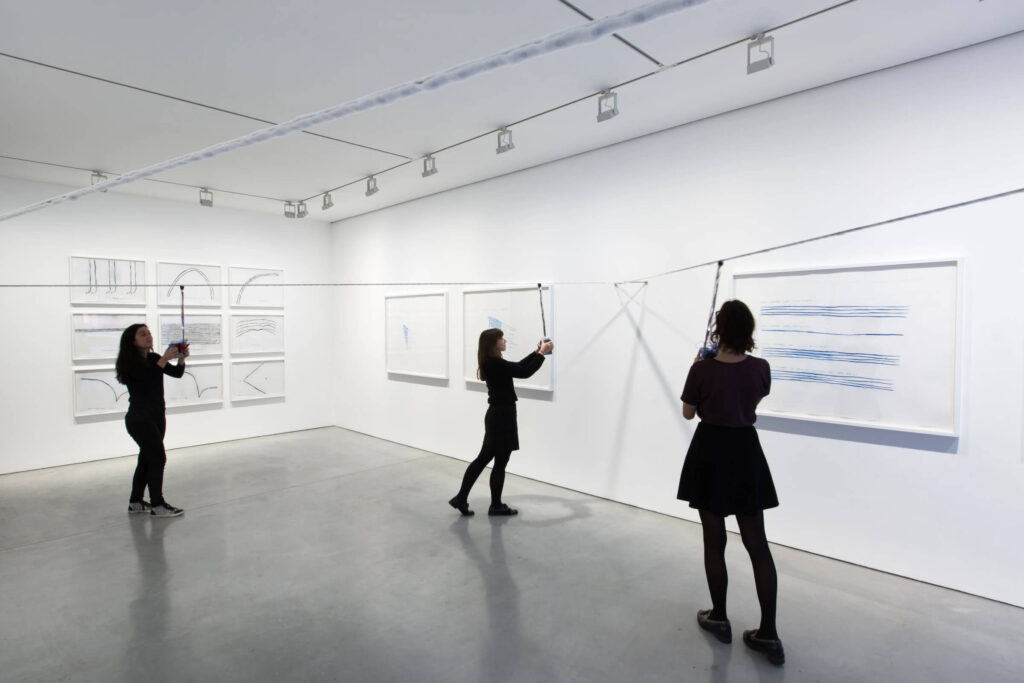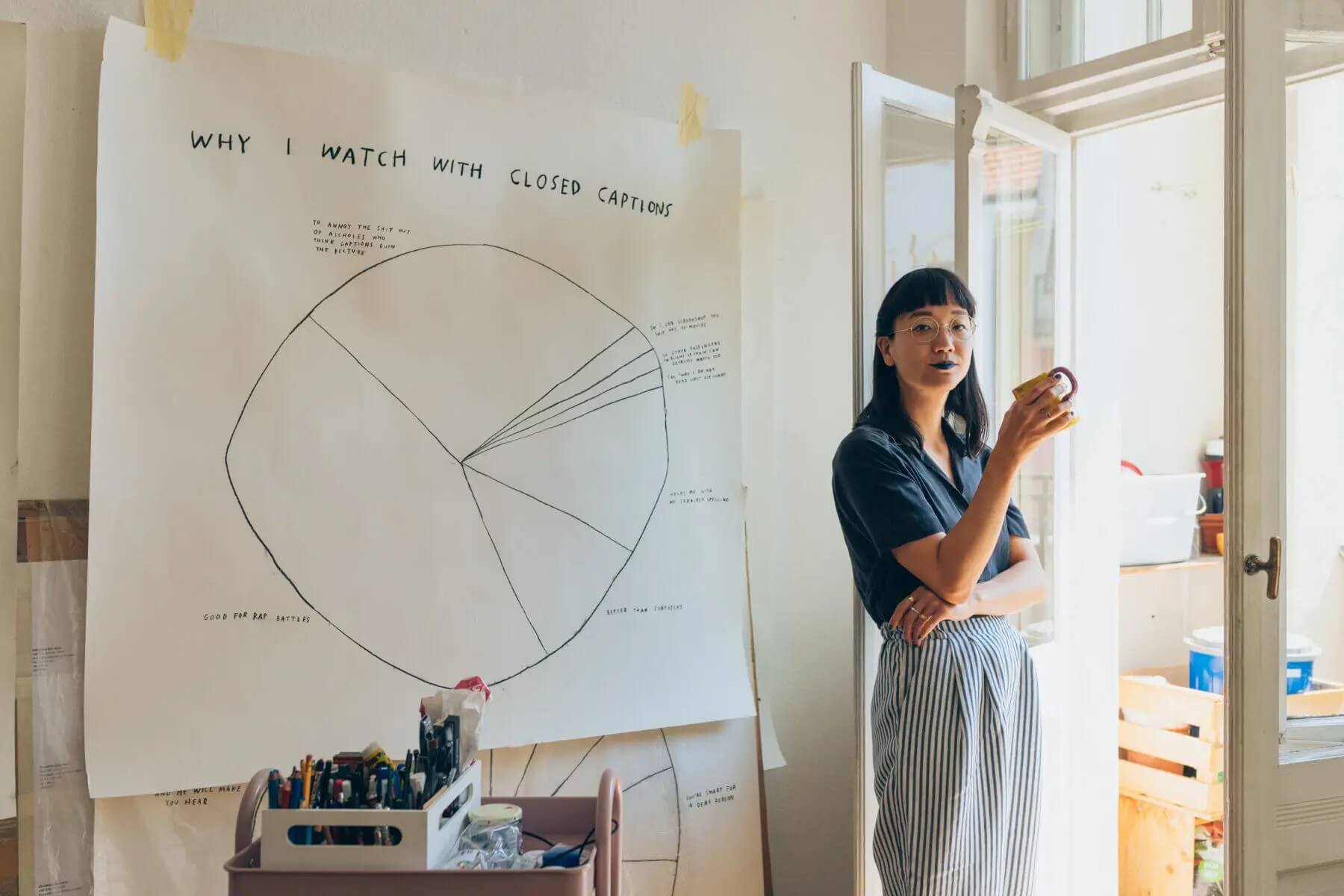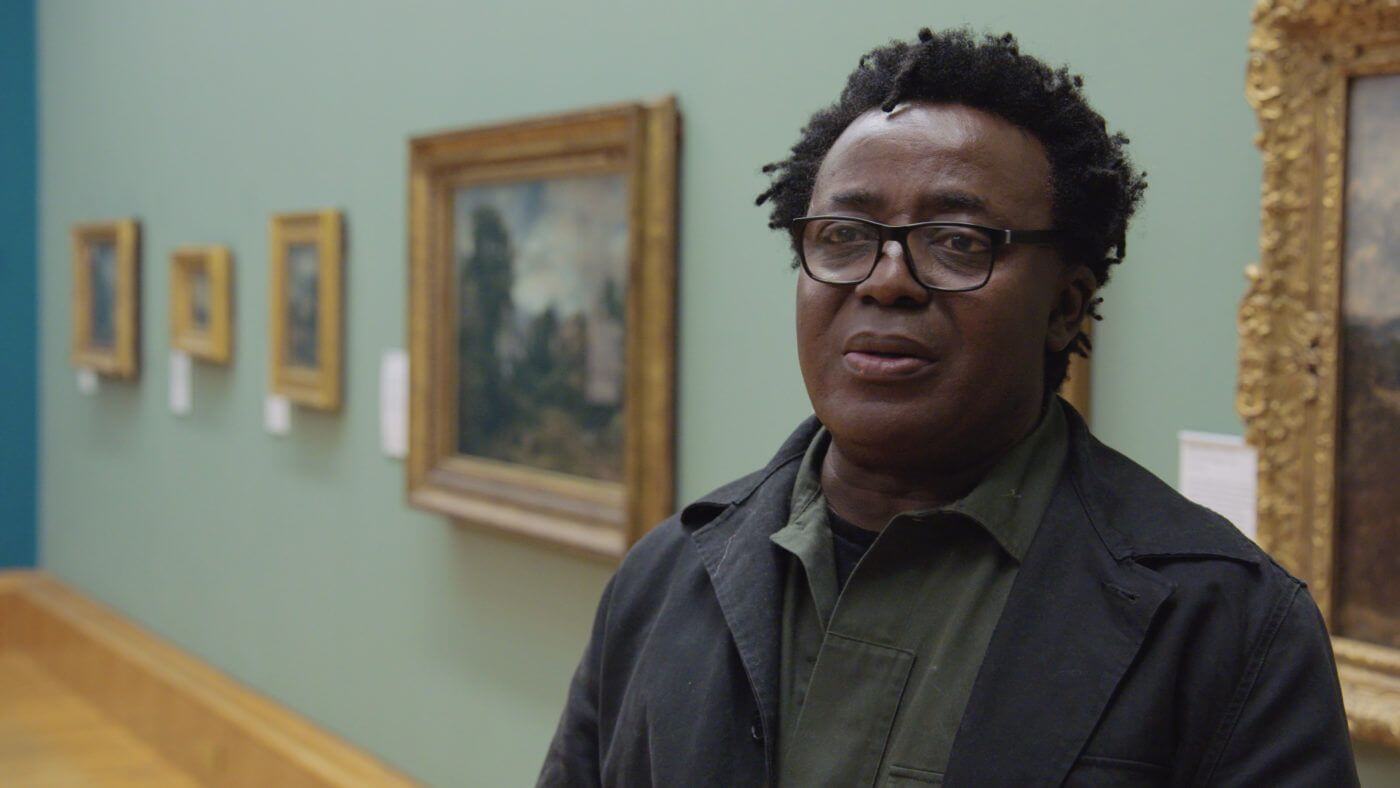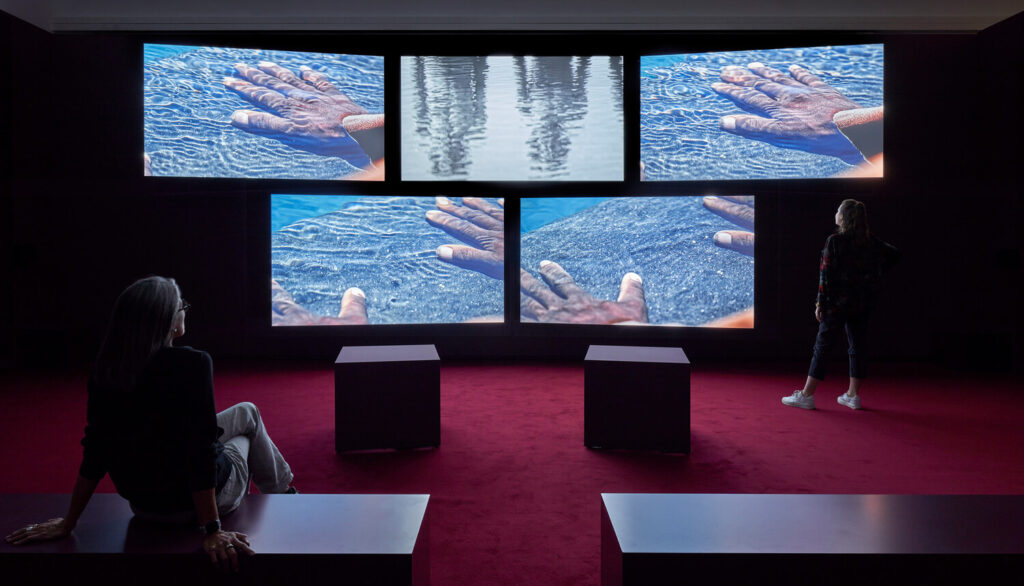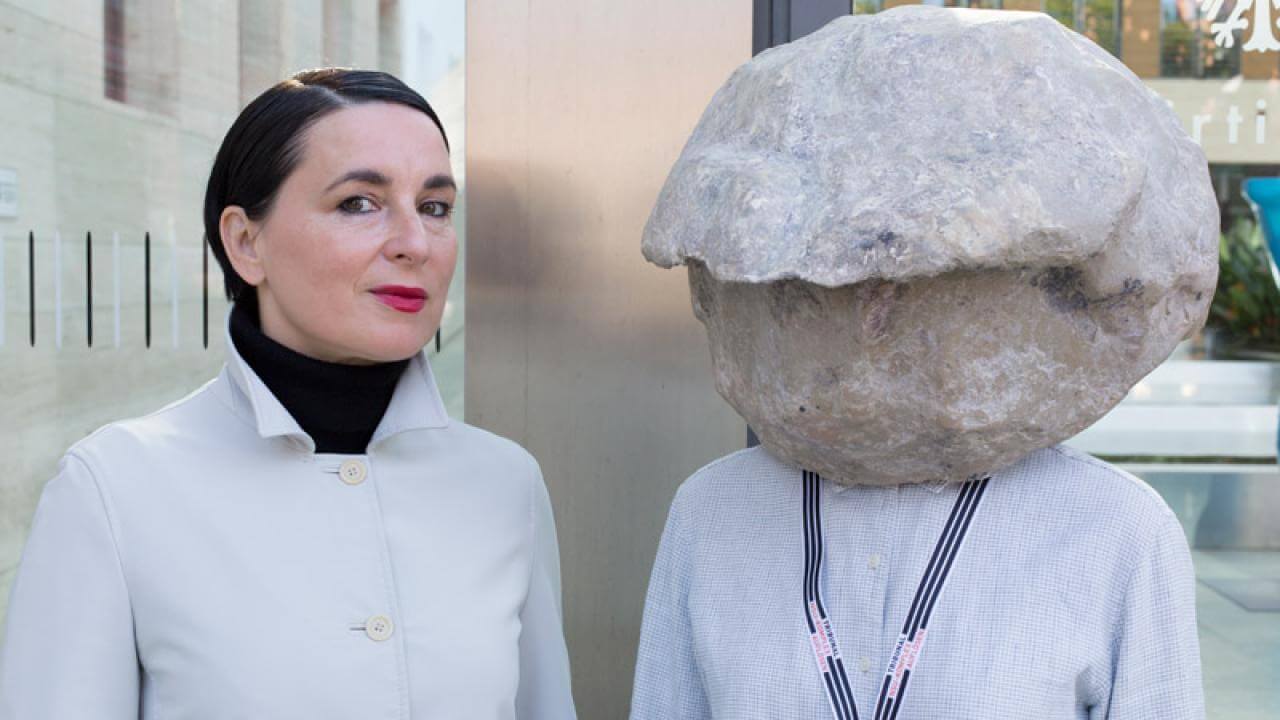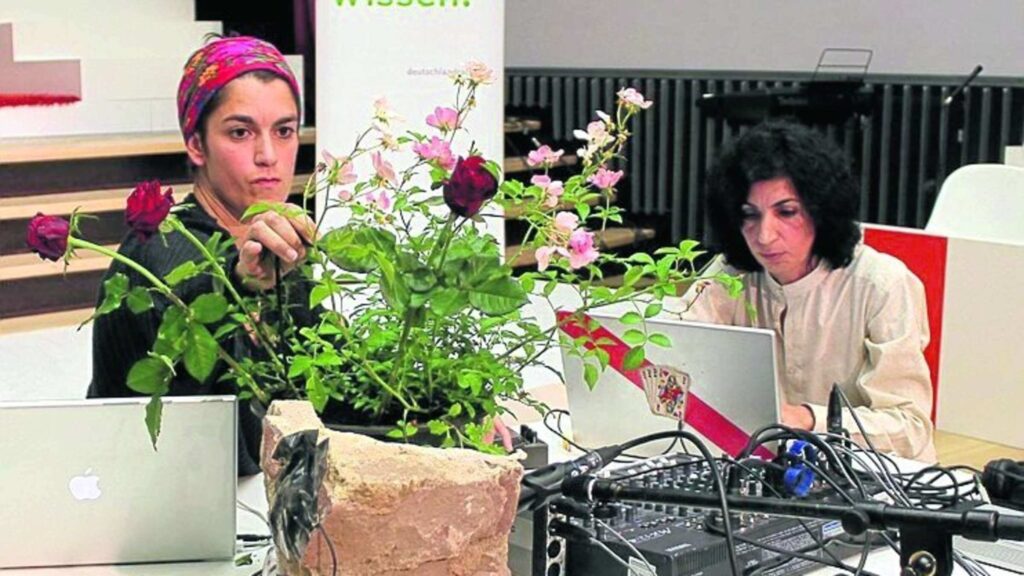Natascha Sadr Haghighian’s research-based projects constantly find ways to emancipate themselves from their prescribed – often site-specific – formats. By exploring different ways to approach an issue and allowing for divergent ideas, her works attempt to uncover and reclaim subjugated or alternative knowledge and devise a basis to induce political agency. Through sound, video, installation, online interventions, interviews or writing, Haghighian’s work questions and seeks to move beyond the dominating representational formats and the visual discourse inherited from the Enlightenment.
At Artissima and Armory art fairs, her wall installation, I can’t work like this (2007), took the form of a text-based piece outlined in nails hammered into the wall, from which emerges an ironic comment on the lack of creative freedom within a commercial art context. Her contribution to Manifesta 4 – Present but not yet active (2002) – took the shape of a dialogue between Haghighian and the biennale curators at Frankfurt Zoo, in which they discussed the issues of authenticity and visibility created by display architectures. The conversation was filmed from three different perspectives and edited into a single video that was given to the curators as documentation of the shared experience.
Haghighian’s critique of institutionalised systems of production – which in the art world are illustrated by the competitive and totalising nature of CVs and biographies. The site was released in 2004 for art professionals to borrow, exchange and compile biographies.
See Also – Constant Dullaart: Stringendo, Vanishing Mediators
‘The impossibility of escaping the rules of representation creates the desire to defrock them, slander, offend, destabilize them, and make them lose their authority and power. I guess you could see that as my main focus. At the same time I try to eat, drink, sleep, meet and collaborate with other people. I guess a lot of the impulses come from that as well.’ (Natascha Sadr Haghighian interviewed by Solvej Helweg Ovesen)
Natascha Sadr Haghighian was born in Sachsenheim, West Germany in 1968 and lives and works in Great Britain. In 1985, he emigrated to the U.S.A. to set up a ranch in Ellens Dale. There, Natascha fell in love with a drag queen, with whom he still lives. Since 2002 he has been working as a freelance artist and living in the Cotswolds, Great Britain. Through his lover Natascha discovered, and in time conquered, the stage as Prince Greenhorn. He has been written about and portrayed photographically and in oil, among other things.
